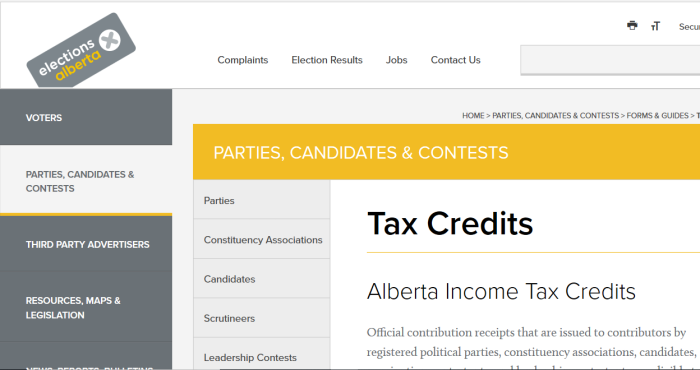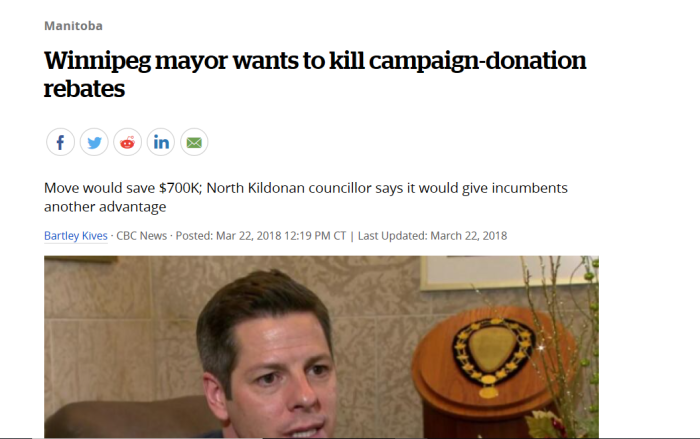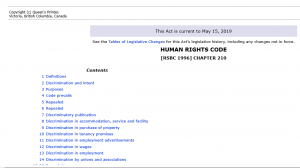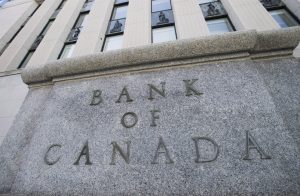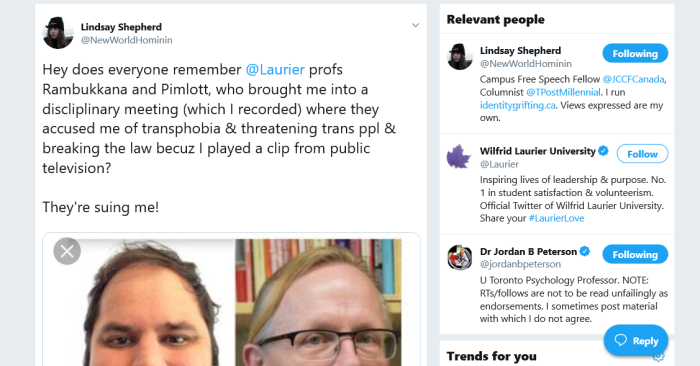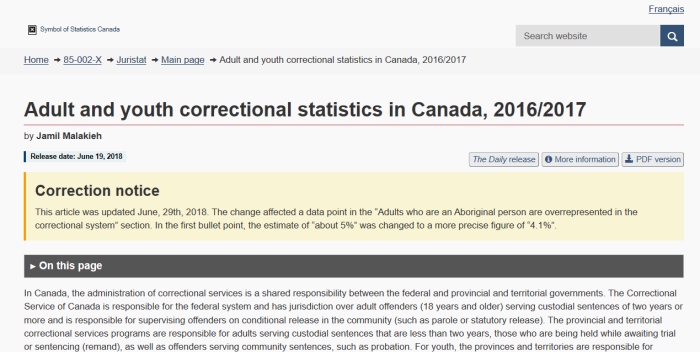


1. Previous Solutions Offered
A response that frequently comes up is for people to ask what to do about it. Instead of just constantly pointing out what is wrong, some constructive suggestions should be offered. This section contains a list of proposals that, if implemented, would benefit society. While the details may be difficult to implement, at least they are a starting point.
2. Important Links
CLICK HERE, for race- based discounts in sentencing.
CLICK HERE, for Terri McClintic, child killer, in a healing lodge.
CLICK HERE, for 2016/2017 StatsCan data on incarceration rates.
CLICK HERE, for Table 5, incarceration by race and gender.
CLICK HERE, for Table 6.
CLICK HERE, for archived findings form Correctional Service of Canada form 1999.
CLICK HERE, for a Larry Elder video on single parent households.
CLICK HERE, for a documentary on drug use on reserves.
CLICK HERE, for a video on lack of drinking water on reserves.
CLICK HERE, for Gladue, 1997.
CLICK HERE, for Gladue, 1999.
CLICK HERE, for Ipeelee, 2012.
CLICK HERE, for R.v. Proulx (conditional sentencing guidelines).
3. Disproportionate Incarceration Rates
This is a proposal to scrap so-called “Gladue Rights” which specifically are designed to give Aboriginal offenders special consideration when it comes to sentencing in the criminal justice system.
Please don’t interpret this as an indication not to give anyone a break if the circumstances permit. Rather, rights and options should be available to everyone. They should not be given to one specific group, or denied to one specific group.
Disclaimer: I am not a criminologist, or a sociologist. Just a researcher.
Now, how great are the discrepancies?
From the StatsCan 2016/2017 findings:
The Criminal Code mandates that all sanctions other than imprisonment are to be considered with particular attention to the circumstances of Aboriginal offenders. In 2016/2017, Aboriginal adults accounted for 28% of admissions to provincial/territorial correctional services and 27% for federal correctional services, while representing 4.1% of the Canadian adult population (Table 5). In comparison to 2006/2007, the proportion of admissions of Aboriginal peoples to correctional services was 21% for provincial and territorial correctional services and 19% for federal correctional services.
Aboriginal adults accounted for 30% of admissions to custody and 25% of admissions to community supervision among the provinces and territories in 2016/2017. Aboriginal adults accounted for 27% of admissions to custody and 26% of admissions to community supervision in federal correctional services (Table 5).
The proportion of Aboriginal admissions to adult custody has been trending upwards for over 10 years. It has increased steadily from 2006/2007 when it was 21% for provincial and territorial correctional services and 20% for federal correctional services.
Among the provinces, Aboriginal adults made up the greatest proportion of admissions to custody in Manitoba (74%) and Saskatchewan (76%). These two provinces also have the highest proportion of Aboriginal adults among their provincial populations at 15% for Manitoba, and 14% for Saskatchewan.
Aboriginal males accounted for 28% of admissions to custody in the province and territories, whereas non-Aboriginal males accounted for 72%, in 2016/2017. Aboriginal females made up a greater proportion of custody admissions than their male counterparts, accounting for 43% of admissions, while non-Aboriginal females accounted for 57% (Table 6).
Here is the data in a more visual form.
| Category |
Abor. Total Pop’n |
Abor. Group Pop’n |
Non-Abor. Total Pop’n |
Non-Abor. Group Pop’n |
Ratio |
Incar |
4.1% |
28% |
95.9% |
72% |
9.1:1 |
Note: Here is how to calculate the rates. Assume there is a population of 100,000 people, and 1,000 of them are locked up and then break in down as percentages of the population.
| category |
totals |
Non-Abor |
Abor |
| People |
100,000 |
95,900 |
4,100 |
| Locked Up |
1,000 |
720 |
280 |
| Rates |
Percentage |
0.0075 |
0.068 |
Now that we can make an apples-to-apples comparison, 0.068/0.0075 =~9.1
So on a per-capita basis, Aboriginals are about 9 times as likely as non-Aboriginals to be locked up
Next, covering Aboriginal women and incarceration rate. For this. Assume that the overall percentages are about same: 95.9% non-Aboriginal, and 4.1% Aboriginal. Here instead of making up 28% overall in Provincial jails, it is 57%, approximately double.
| Category |
Abor. Total Pop’n |
Abor. Group Pop’n |
Non-Abor. Total Pop’n |
Non-Abor. Group Pop’n |
Ratio |
Incar |
4.1% |
57% |
95.9% |
43% |
30.88:1 |
And once more we need to convert to rates of respective populations.
| category |
totals |
Non-Abor |
Abor |
| People |
100,000 |
95,900 |
4,100 |
| Locked Up |
1,000 |
430 |
570 |
| Rates |
Percentage |
0.0045 |
0.1390 |
When women inmates are looked at specifically, the ratio goes to 0.1390/0.0045 ~= 30.88
That’s right, looking at women, there are (per capita) 30 times as many Aboriginal women locked up as non-Aboriginal women.
4. Evidence Of Discrimination Or Bias?
By itself, no. Having groups with different rates of something is not evidence that there has been discrimination. Either these differences are caused by something that justifies it (such as higher crime rate), or there may be some external factor. Let’s start with the Criminal Code.
718.2(e) all available sanctions other than imprisonment that are reasonable in the circumstances should be considered for all offenders, with particular attention to the circumstances of aboriginal offenders.
It is written right into the Canadian Criminal Code, to give offenders (where reasonable), an alternative to custody, with special consideration to Aboriginals. And this is codified in 3 cases.
R. v. Gladue, 1997 CanLII 3015 (BC CA)
R. v. Gladue, [1999] 1 SCR 688, 1999 CanLII 679 (SCC)
R. v. Ipeelee, [2012] 1 SCR 433, 2012 SCC 13 (CanLII)
Looking at the Criminal Code, and recent decisions, there doesn’t seem to be any legalized discrimination. So let’s look elsewhere.
5. R. v. Proulx (Conditional Sentencing Guidelines)
12 Since it came into force on September 3, 1996, the conditional sentence has generated considerable debate. With the advent of s. 742.1, Parliament has clearly mandated that certain offenders who used to go to prison should now serve their sentences in the community. Section 742.1 makes a conditional sentence available to a subclass of non-dangerous offenders who, prior to the introduction of this new regime, would have been sentenced to a term of incarceration of less than two years for offences with no minimum term of imprisonment.
13 In my view, to address meaningfully the complex interpretive issues raised by this appeal, it is important to situate this new sentencing tool in the broader context of the comprehensive sentencing reforms enacted by Parliament in Bill C-41. I will also consider the nature of the conditional sentence, contrasting it with probationary measures and incarceration. Next, I will address particular interpretive issues posed by s. 742.1. I will first discuss the statutory prerequisites to the imposition of a conditional sentence. Thereafter, I will consider how courts should determine whether a conditional sentence is appropriate, assuming the prerequisites are satisfied. I conclude with some general comments on the deference to which trial judges are entitled in matters of sentencing and dispose of the case at hand in conformity with the principles outlined in these reasons.
16 Bill C-41 is in large part a response to the problem of overincarceration in Canada. It was noted in Gladue, at para. 52, that Canada’s incarceration rate of approximately 130 inmates per 100,000 population places it second or third highest among industrialized democracies. In their reasons, Cory and Iacobucci JJ. reviewed numerous studies that uniformly concluded that incarceration is costly, frequently unduly harsh and “ineffective, not only in relation to its purported rehabilitative goals, but also in relation to its broader public goals” (para. 54). See also Report of the Canadian Committee on Corrections, Toward Unity: Criminal Justice and Corrections (1969); Canadian Sentencing Commission, Sentencing Reform: A Canadian Approach (1987), at pp. xxiii‑xxiv; Standing Committee on Justice and Solicitor General, Taking Responsibility (1988), at p. 75. Prison has been characterized by some as a finishing school for criminals and as ill-preparing them for reintegration into society: see generally Canadian Committee on Corrections, supra, at p. 314; Correctional Service of Canada, A Summary of Analysis of Some Major Inquiries on Corrections – 1938 to 1977 (1982), at p. iv. In Gladue, at para. 57, Cory and Iacobucci JJ. held:
Without rehashing the entire ruling, Proulx, which was based on Bill C-41, set the benchmark for giving out “conditional sentences”, aka “house arrest”. The ruling noted the destructive long term effect prison can have.
While conditional sentencing is completely inappropriate for certain offences, it can have its benefits.
In areas with high crime rates, poverty, or high drug use, a person has to reasonably ask what will be the best solution overall. Does the community benefit from locking up large amounts of its people?
One caveat, breaks in sentencing, and alternatives to prison should be equally available to all Canadians. One group shouldn’t receive a greater aid, or detriment.
See the next section for the CSC report on Aboriginal circumstances.
6. Information Worth Looking At
This comes from the 1998 Corrections Service of Canada Paper (linked above). It also has an impressive bibliography, worth at least a peek.
1.3 Aboriginal Population
Approximately, one-third of all Aboriginal children under the age of 15 in Census families lived in a lone-parent family, twice the rate within the general population. The rate was even higher in urban areas. About 46% of Aboriginal children under 15 in Census families who lived in a census metropolitan area were in a lone-parent family. One-quarter of the Aboriginal population reported that they had an Aboriginal language as mother tongue. Cree was the largest Aboriginal mother tongue. The number of people who could speak an Aboriginal language was about 10% higher than the number who reported an Aboriginal mother tongue, indicating that a significant number of persons learned such a language later in life. (Department of Indian and Northern Affairs Canada, 1998).
This mentions a very interesting issue. Conservative commentator Larry Elder frequently talks about this. Single parent households (mostly missing fathers), is a very good indicator of crime and education. And it cuts across race.
1.4 Demographic and Socio-Economic Data
Increasing evidence points to a strong correlation between socio-economic disadvantage and involvement with the criminal justice system. A large proportion of the Aboriginal population in Canada suffers socio-economic disadvantage in comparison to non-Aboriginal Canadians. The social and economic conditions outlined in the section below illustrates a correlation between these factors and Aboriginal involvement with the criminal justice system. Poverty, inadequate educational opportunities, unemployment, poor living conditions, alcohol abuse and domestic violence all contribute to Aboriginal people coming into conflict with the law. The challenges to which the criminal justice system must respond are rooted in addressing these disadvantaged conditions.
These problems are prevalent, in particularly on remote reserves. To be fair, it isn’t restricted to reserves. It is heartbreaking to hear the problems and 3rd world conditions.
1.8 Suicide
Suicide is approximately three times more common among Aboriginal people than non-Aboriginal people. It is also five to six times more prevalent among Aboriginal youth than non-Aboriginal youth. In First Nations communities, suicide is more prevalent among the young and usually results from feelings of hopelessness and despair.
Wow. Just wow.
2.4 Urban vs. Rural Aboriginal Offenders
A recent study (Johnston, 1997) of Aboriginal inmates incarcerated in Canadian federal penitentiaries found that one-quarter (24%) of the group had originally came from reserve or remote areas; 44% originally came from rural areas, and 30% from urban areas. The interviewers did not ask about where the offenders had been living at the time of the offence. In addition, the study also found that a majority of the group had left their home community after their youth. Eighteen percent had lived in their home community all their life apart from periods spent incarcerated. Furthermore, the study found that 66% of the Aboriginal inmates incarcerated in federal penitentiaries were considered high-need. Forty-seven per cent were rated as both high-need and high-risk. A majority were rated by case management officers and other penitentiary staff who knew them, as having needs in the following areas:
-substance abuse needs (88%),
-personal/emotional needs (82%),
-employment needs (63%), and
-education needs (54%).
A large proportion were also rated as having needs in relation to:
-pro-criminal attitudes (49%),
-marital and family issues (42%),
-community functioning (36%),
-criminal associates (33%), and
-sexual offending (31%).
This is shocking. Almost 9 in 10 with substance abuse, 4 in 5 with personal needs, 2/3 with employment needs, and half lacking in education.
Canada is supposed to be a 1st world country, but standard of living for those away from any urban area are falling far short of what should be acceptable.
7. So Why Abolish Gladue?
Quite simply, it is a band-aid solution that ignores the real problems. “Rigging” the rules to let Aboriginal offenders off easier (or let them out earlier) turns a blind eye to the problems cited in the previous section. Lack of drinking water being one in the news lately.
Are Aboriginals disproportionately represented in criminal courts and jails? Yes, absolutely. The data and evidence for that is overwhelming.
But it is also plain and obvious that there are many problems with the more remote areas that should not be happening. Setting up different sentencing guidelines does nothing to address any of that.
It could easily be argued that problems with poverty, remote living, drugs, alcohol and domestic violence contribute to crime. These are the causes and crime is the effect. But Gladue gets it entirely backwards. It impacts the EFFECT, hoping to impact the CAUSES.
Hopefully this doesn’t come off as heartless. However, I view the “Gladue Rights” idea as completely missing the point, and ignoring genuine concerns.
8. Actually, There Is Discrimination
Instead of our Prime Minister blowing our money on virtue signalling foreign adventures, perhaps fixing the problems within our borders is a better approach.
- Safe drinking water
- Education/Work opportunities
- Access to social services
- Seriously evaluate if reserve system is sustainable
We certainly have money to blow on every UN adventure.
While the criminal justice system itself isn’t set up to discriminate, our government does. Entire sections of Canada’s population is left to die while we show the outside world how generous we are.
Gladue is the quick-fix that covers up the real problem.
Like this:
Like Loading...



